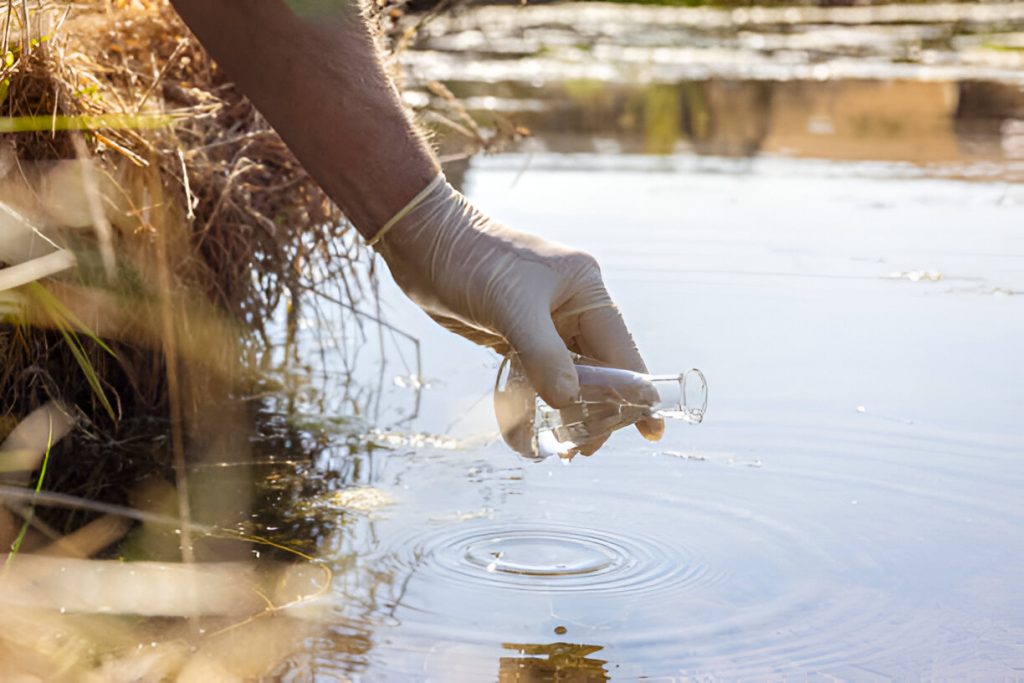
The Essential 5-Step Pond Treatment Guide
Keeping your pond clean and healthy does not require complicated chemistry or expensive equipment. It is possible to keep crystal-clear water and happy fish with healthy (and easy) techniques.
Whether you are maintaining a small garden pond or a larger water feature, these five essentials lake water treatments principles apply. That Pond Guy, a renowned water care specialist, swears by this systematic approach for transforming troubled ponds into thriving ecosystems.
1. Oxygenate for a Healthier Pond
The basis of pond health is aeration, which avoids stagnation and promotes the life of fish.
Why it works: Recirculating water ensures an equal distribution of oxygen, eliminating dead spots at the bottom.
Best methods:
- Floating fountains (ideal for shallow ponds under 6 feet)
- Diffused aeration systems (best for deep ponds and lakes)
- Solar/windmill aerators (perfect for remote locations)
Bonus benefits: Less build-up of muck, algae and bad smells are prevented.
2. Remove Debris Regularly
Physical cleaning complements your biological filtration system.
Tools you will need:
- Pond rake for larger ponds (use weekly)
- Fine mesh skimmer for small ponds (use daily).
Pro tips:
- Never remove more than 1/3 of vegetation at once
- Clean skimmer baskets weekly during peak season
- Consider a bottom vacuum for severe sludge buildup.
3. Introduce Aquatic Plants

Nature’s filtration system works wonders for water quality.
Top plant choices:
- Floating plants (water lettuce, hyacinth) for shade and algae control
- Oxygenators (hornwort) for water purification
- Marginal plants (iris, cattails) for nutrient absorption.
Planting strategy:
- Best effect on 40-60% coverage area
- Apply diverse species to exploit alternative nutrients.
4. Use Pond Dyes Strategically
Dyes are valuable ecologically in addition to their aesthetics.
Key benefits:
- Reduces water temperature by blocking sunlight
- Limits algae growth by filtering specific light wavelengths
- Provides fish protection from predators.
Application tips:
- Select veterinarian-tested FDA-approved dyes
- Reapply after 4-6 weeks in season
- Pair with Aeration to have a full effect.
5. Harness Beneficial Bacteria
These tiny cleaning machines address issues at root.
How they work:
- Consume excess nutrients that feed algae
- Break down organic sludge on pond bottoms
- Improve water clarity naturally.
Usage guidelines:
- Monthly treatments for maintenance
- Bi-weekly applications for problem ponds
- Always dose based on actual pond volume.
Advanced Treatment Combinations
For stubborn pond problems, combine these approaches:
- Algae blooms: Aeration + bacteria + shade plants
- Muck accumulation: Bacteria + occasional raking.
- Fish health issues: Oxygenation + reduced stocking density
- Persistent odours: Aeration, bacteria and debris removal.
When to Call the Professionals
Although these techniques can give most scenarios, seek professional assistance in:
- Large-scale algae outbreaks
- Complex equipment installations
- Fish health emergencies
- Major water quality imbalances.
To kick off any treatment plan, That Pond Guy suggests first doing a water test. Understanding your pond’s specific needs prevents wasted effort and ensures effective results.
Maintenance Schedule Simplified
Daily:
- Skim surface debris
- Check fish behaviour.
Weekly:
- Rake/problem areas
- Clean pre-filters.
Monthly:
- Apply beneficial bacteria
- Test water parameters.
Seasonally:
- Deep clean equipment
- Adjust plant coverage.
Modify aeration as temperatures change
By following this comprehensive yet straightforward approach, you will spend less time battling pond problems and more time enjoying your beautiful water feature. Consistency trumps heroic interventions in pond care.
